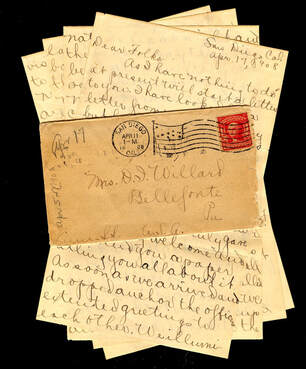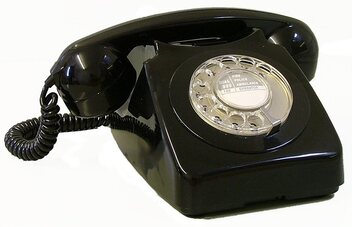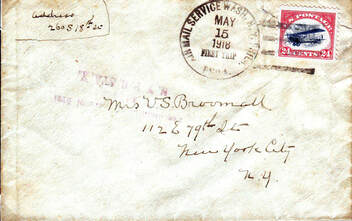all of the selves we Have ever been
 I open my mailbox to a surprise. Inside is an actual letter. It is not from a credit card company, the IRS, or Social Security; it is from a friend. Paper mail is such a rare and treasured find in the digital age, especially during a pandemic, a kind of people-famine. I do not need to look at the return address. The handwriting is instantly recognizable. Though I’ve known my friend for 44 years, her handwriting has never changed. Each letter of the alphabet maintains its distinctive form with wide spaces between the words. The printing is confident and cheerful, the optimistic qualities I have grown to love and admire in my old friend. Having her handwriting on the paper before me is like having her here with me now. Filled with delight and anticipation, I do not wait to get inside my apartment before sliding my finger under the flap and tearing open the envelope. Her note to me is brief—her usual style—and contains an enclosure of an article she thought might interest me. And it does. Her letter gets me thinking, and I go to another container, a weary, sagging cardboard box in my storage closet. I lift the worn flaps and gather up a messy pile of aged cards and letters, the spirits of people loved asleep on a shelf. I gently begin to awaken them. There is an index card that contains the handwriting of my cousin Marcia. The card describes the town in Lebanon from which my grandparents came. My cousin names the place where our roots originate, hers and mine. We are branches on the same tree. The tip of her branch has touched heaven, and yet the sturdy tree with all of its branches ties us both to earth, to each other, and to that homeland so far away. It is the only sample of Marcia’s handwriting that I possess, making it seem as exotic as the place it describes. Next in the pile is my own handwriting on a note from teenage-me to my Aunt Lillie. The note was returned to me after Lillie’s death many years ago. The content recalls the weeks of a summer spent in my Aunt Lillie’s home. In a sweet, youthful penmanship, I see my self-conscious sixteen-year-old self, and I am reminded of the stresses and struggles of those teen years. The note is like a magical looking glass through which I can see the two of us sitting in the living room drinking Diet Pepsi, watching soap operas, Johnny Carson, and old Tammy movies. I find a short note from my father. The words are neatly printed in blue. The letters are all in caps: DEAR LIL...LOVE DAD. In the same envelope is an aged letter my father wrote to his mother when he was a teen. The letter is written in an unfamiliar, back-handed cursive. The contents and the signature assure me that the letter was written by my father, and yet it feels like the work of a stranger. It does not belong to MY DAD. This find reminds me that my father was a stranger to me and to himself for much of my life. There are a series of letters from my younger brother. Each recounts a different phase in his personal development as well as the nature of our bond. Each letter chronicles the dynamics in our changing family story. I gasp at how similar my brother’s handwriting is to that of my son. In the years since my brother’s early and unexpected death, more of him has emerged in my own child. I am reminded that the people we love come back to us in the most remarkable ways. There are so many other letters in the box, so many memories and pieces of myself and others. The news is a mixture of happy and sad. There is a letter from my other-mother, Jane, congratulating me on my engagement and offering motherly advice. There are notes from my artistic sister-in-law that contain photos of my niece and nephew. Letters from friends inform me of job losses, divorces and the deaths of parents and partners. A deeper pile chronicles my life as a mother and the growth of my children as their crude printing and misspellings morph into steady, fluid, adult script. Once again, I drink up all of the happy birthday and Mother’s Day wishes. Their great pride and their small, beaming faces return to me through this magic looking glass. The content of each card and note brings back the life I shared with others. The handwriting brings back the emotion. Something flowed through each writer’s hand, into the pen, onto the paper, and into my home and my heart like a long and precious thread. If I follow it, the thread will lead me back to them, from that long-ago place to wherever they are now, as though they have been hiding there, waiting for me to find them. We always assumed there would be more. More time. More mail. We did not anticipate the loss of familiar penmanship in a digital age. Life was full. We had no reason to imagine that days might come when we would hang onto our loved ones by a long and precious thread formed from the silk of their handwriting. On some ordinary day long ago, I opened my mailbox and found a card or a letter. As it sat on my desk, my nightstand, or my kitchen counter, I left it there. And then one day, for reasons unknown, instead of tossing it into the trashcan or the shredder, I moved the letter to a repository, a weary, sagging cardboard box on a shelf in my storage closet. The years passed, and with time and under the weight and pressures of life, as coal becomes diamonds, the mail turned to treasure, the handwriting to silk and a long and precious thread.
0 Comments
 My phone rang three times this morning before I could get to it. It was a surprise. I am accustomed to receiving text messages throughout the day, but the phone does not ring often any more. As I ran for the phone, I was reminded of my youth. When the phone rang, it generated excitement. Everyone in the household dashed toward the landline wanting to be the one to answer. If the caller was a relative or someone known to everyone in the family, the receiver was passed around until each person had a turn to talk. On the phone or in person, parents trying to civilize a child would never tolerate offspring who did not courteously respond when spoken to. And much of the time, children were expected to hold onto their thoughts and just listen. Now people show up at state capitols with assault weapons. They gather in the streets. Burn down buildings. Take over police headquarters. Bury people with tweets. Is this what it now takes to be heard? How do I ignore thee? Let me count the ways. First, there are in-person encounters. I would say face-to-face except people don’t look at one another any longer. They are busy staring into their phones and scrolling with their fingers, giving an occasional “uh-huh,” as you speak. Folks gather in the lunch room, at a meeting, or around a dinner table with others and occupy themselves with their phones. They might even laugh and talk out loud to no one in particular as they read quips from their screens. Then there is the old-fashioned letter. What a surprise to get paper mail! But how likely is a person to receive a letter anymore? And what is the likelihood someone would answer if you took the time to write? A person has better odds of discovering cave drawings than getting a letter in reply. Email was great at the start. Fast. Efficient. An exciting new technology. Now? Forget about it. People are entombed in email. If you get an answer, it might take weeks. More often, there is no answer. Ever. Recently, someone I know shared frustration that an important colleague had 200 unopened emails! Ouch! And is that just the tip of the cold shoulder? Probably. I called a business associate one day to follow-up on an email. As I waited on the line for him to search his inbox, he told me that he receives approximately 300 emails a day. I would be on life support by the end of a week if I tried to thoughtfully answer that many emails. And don’t think you can sneak up on someone with feigned urgency by calling them. Folks rarely answer their phones unless they want to chew out or humiliate a telesales person. “Let it go to voicemail” is the company song. We all know that voicemail is hopeless. Too much effort. You have to dial your voicemail box, listen, maybe jot down a number or a piece of information, and dial back. A person would need a boost from a bottle of Ensure to support all that effort. And who keeps Ensure on hand? Your best hope might be a text message, but don’t look for deep or thoughtful communication. Short messages might appear curt. Acronyms can lead to confusion. Suddenly, someone stops speaking to you because a typo lead to a new acronym that unintentionally insulted the receiver…The alphabet was once something decipherable by preschoolers, now you need an interpreter. Does that statement deserve an OMG? A WTF? IDK. And I give up. And then there is the interplanetary universe of customer service. Phone menus. Holds. Chats with AI. Scripted responses. Little that is helpful. Much that is infuriating. What is the actual goal of customer service? Drive up the sale of psychotropic medications and mood stabilizers? There is a lot of discontent brewing among the ignored and dismissed. It is a sad day when it is easier to storm the capitol than it is to get a return phone call.  I have always loved getting the mail. Real mail. Paper mail delivered by the U. S. Postal Service. In years past, opening a mailbox filled to bursting was like striking gold in the Yukon. That level of excitement cannot be compared to the nauseating feeling of opening your email inbox today and seeing 200 new messages. As a little girl, I lived on-and-off in a small town where there was no door-to-door delivery. Citizens walked to the post office to collect their mail from a small, square box inside the main post office building. There were no keys to these mailboxes. Patrons had to remember the combinations. As I moved ahead in grade school, I was sometimes sent to the post office to fetch the mail. To a seven year old that was the equivalent of being named a diplomat. In our family’s diplomatic corps, I had a father serving overseas, and we sometimes received letters from him in special air mail envelopes with red, white and blue borders. International mail in a small town was a big deal. As my father’s image grew hazier in my young mind, the letters he sent reminded me that he was real and still out there somewhere. Sometimes my older sister and I would fight over who got to do the honors of getting the mail. It was always dangerous if we walked to the post office together without having worked out the details in advance. Truth be told, each of us walked along plotting how to get to the box first and apply the combination that would open the little door to the mailbox. There were times when my sister and I got into arguments about this while at the post office. This was dangerous. In a small town where everyone knows your name, someone was going to call your parents and maybe your grandparents, aunts, uncles, and cousins as well. That could get a girl kicked off of the honor detail. Skirmishes aside, I never lost my love of getting the mail. In later years after we relocated to a suburban neighborhood, we grew accustomed to the rhythms of our daily mail carrier. We would kneel on the couch and watch for him through the bay window. The mailbox lined up directly with the middle cushion of the couch. As soon as we saw the mailman, we zoomed outside for the mail. If we saw the mailman getting out of his truck, we knew there was really big news—maybe a certified or registered letter or a package too big for the mailbox. Of course, there was rarely mail for children back then. The fact that it was rare but it DID happen made us all the more faithful to mail-watch duty. Ah, the power of intermittent reinforcement!! For me as child, mail might be a birthday card. My Aunt Lillie faithfully sent each of her nieces and nephews a birthday card containing one dollar for each year of life. It was especially exciting when we crossed into the double digits— to 10 and beyond! The other exciting mail came from my paternal grandmother who lived in New York City. She was quite the seamstress, and she would send the most beautiful handmade clothes for our Barbie dolls—it was like a shipment from the House of Chanel—teeny tiny haute couture. By the time we were further along in grade school, the mail included subscriptions to Highlights for Children. Thus began my love of magazines. Over the years, we also enjoyed the magazines our parents received--National Geographic, Life, Look, Good Housekeeping, Readers Digest, and Redbook. Back then, magazines were loaded with content, pictures and coupons too. Another special assignment of childhood was to clip those coupons. Catalogs came in the mail in an abundant supply. We didn’t shop a lot back then. You got new things on special occasions or at the start of a school year or season. But that didn’t stop us from dreaming. We wore out the pages, marking items with pens and pencils, dog-earring the corners, and coming back to certain pages over and over again. There were catalogs for every product imaginable. If someone in the household did make a purchase then that led to a flood of new catalogs arriving in the mailbox in the days following. Those catalogs allowed us the joy of hope, longing, and occasionally, the anticipation of an order that was coming not overnight, but “any day.” High school brought new types of mail. We were inundated with flyers and brochures from colleges and trade schools. Our personal magazine subscriptions included Teen, Glamour, or Seventeen. Friends on vacation might send postcards, and now, in addition to birthday cards, there were graduation announcements and cards. By the time we were young adults, the junk mail had our names on it. And the bills were addressed to us too. Some good things still arrived like birthday cards, letters from friends, income tax refunds, our own magazines like Self and Runners World, and an assortment of catalogs. We received personalized Christmas cards and not just the one addressed to “the family of.” As I and my friends married and had children, there were bridal shower invitations, wedding and birth announcements. I received a letter from one dear friend that her mother had died and news from another that her husband had passed away in his sleep. In the current times, my young adult children check their mail maybe once a week. While younger people may have packages arriving daily, they are not invested in the paper mail like those of us from earlier generations. During this time of shelter- in-place, I find myself returning to that time in my youth when I memorized the rhythms of my mail carrier. I can hear the purr of the mail truck’s engine a mile down the road—and that is in urban traffic. I watch from the window as his truck arrives. I know about how long to wait before checking my mailbox. Most days, I find the mailbox empty. So much is done online. I sort through the occasional junk mail, store flyers and coupons. But it is always a joy to find something personal. Getting mail is a reminder that your people are out there somewhere, and that they still care about you and are thinking of you too. They went to some effort to create, stamp and mail this item to you. Seeing the familiar handwriting of someone you love is like catching the scent of someone familiar when you are lonely and least expecting their presence. The return address physically brings another part of the country or the world into our hands even as we cannot leave our homes. In my house there is a box filled with treasures that once came in the mail—letters and greeting cards saved from friends and family, people both present and long gone. They are special reminders that renew old relationships and memories. The familiar handwriting and the sometimes corny messages bring them back to me. Each saved letter or card is not just a piece of mail, it is a snapshot of my history and piece of someone loved. I cannot imagine a time when I will wait a week to check the mailbox. Especially not now. I know I will never outgrow the joy of getting the mail. |
AuthorLilli-ann Buffin Archives
July 2024
Categories
All
|
 RSS Feed
RSS Feed